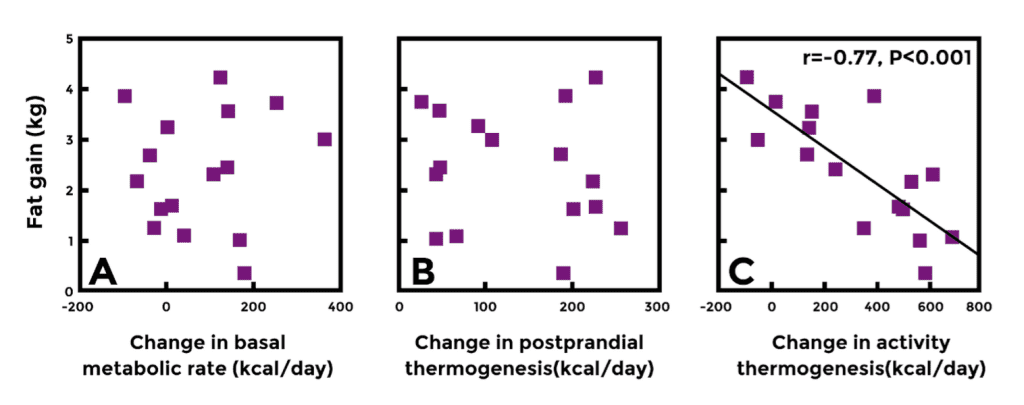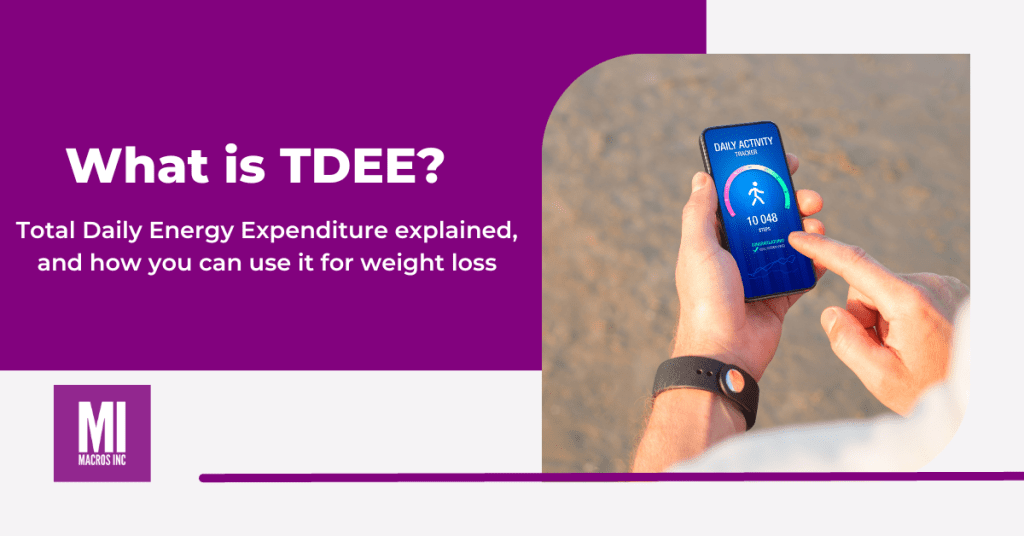TDEE is an acronym for Total Daily Energy Expenditure, which is really just the name for the total amount of calories you expend in a day.
Another way to think about TDEE is that it is really just your total metabolism
That is it.
Super simple concept, but simple doesn’t mean unimportant. In fact, understanding the concepts about what makes up your TDEE is maybe the most important thing you can do for controlling your success when chasing weight loss or body composition goals
Jump to a Topic
What is TDEE?
When we think about TDEE there are really two main types of energy expenditure: Resting energy expenditure and non-resting energy expenditure.
Resting energy expenditure is simply the energy our body uses to just stay alive. It doesn’t include anything else, just keeping the blood moving and your tissue and organs alive. This portion of our TDEE is often referred to as our BMR or our RMR
Non-resting energy expenditure is everything else. This is the energy it takes your body to do everything else, which fundamentally boils down to three main things:
1) Digesting food, which we call the thermic effect of food (TEF)
2) Physical activity of daily living that is non-exercise activity, which we call non-exercise activity thermogenesis (NEAT)
3) Physical activity that is structured exercise, which we call exercise activity thermogenesis (EAT).
That is it. Again, super simple… but also super important to understand as we are going to discuss below.
Why Knowing Your TDEE Is Useful for Weight Loss
Knowing your TDEE is useful for weight loss because it makes up 50% of the calorie balance equation. It becomes even more useful when you understand what portions of TDEE you have under your control AND which portions actually matter in terms of weight loss or weight gain in the real world.
Let’s cover resting energy expenditure first. Most people often think their resting energy expenditure, specifically their BMR, is one of the main reasons why they begin to gain weight and certain periods in their lives. However, this is actually not the case. In fact, BMR has almost no predictive value for whether people gain or lose weight… kind of crazy isn’t it?
This means that our non-resting energy expenditure must be what helps determine weight loss or weight gain…right? That is in fact correct. However, most people think that their exercise activity determines weight loss or weight gain. This is true in some sense, but it turns out that exercise actually has a much smaller impact on weight loss than most people think.
Also, while you can increase your thermic effect of food by eating a higher protein diet, it doesn’t really change enough to be meaningful for the large majority of people.
If that is the case, what DOES impact weight loss the most with regard to TDEE?
The Importance of NEAT for Weight Loss
Studies have shown that our NEAT (the physical activity we do in a day that is not structured exercise) predicts most of the weight gain or weight loss in our adult lives.
And, it turns out for us that this is great news! Our NEAT is something that we have the most control over and small lifestyle changes can dramatically increase or decrease our NEAT.

How to Determine Your TDEE
There are a lot of different ways to determine your TDEE, with some being more accurate than others. There are formulas to calculate your TDEE yourself but the most effective way is to use a TDEE calculator. But note, all TDEE calculators are estimates and they all follow the same logic:
Step 1: estimate your BMR or resting-energy expenditure based on height, weight, age, and biological sex.
Step 2: multiply your BMR/resting-energy expenditure by a constant number to adjust for your physical activity.
That is fundamentally how all methods of calculating TDEE work.
Over the last several decades there has been a lot of research looking at how to accurately estimate TDEE.
There are a handful of research equations used such as:
- Mifflin-St Jeor
- Harris Benedict
- Owen
- Katch-McArdle
There are also other commercially available calculators that use adjusted versions of these and also utilize data collected and refined from the users, such as our calculator here at Macros Inc that we have tested with over 2.5M users.

Tips For Increasing TDEE
When we think about how to increase TDEE there are realistically two main strategies that you have control over:
- Exercise more
- Increase your NEAT
Increasing exercise is a relatively straightforward concept. You can increase the number of days you exercise, increase the length of your exercise sessions, increase the intensity of the exercise, or find forms of exercise that burn more calories (e.g. swimming burns more calories than walking). However, realize that for most people, increasing your exercise probably only increases your TDEE by 200-500 calories per day.
Increasing your NEAT is probably the most effective way to increase your TDEE. In fact, lifestyle changes that meaningfully change your NEAT can increase your NEAT calories from a few hundred a day to a few thousand a day. In fact, NEAT levels can vary by up to 2,000 kcals a day per person!
Some really effective ways to increase your NEAT in a given day are:
- Take more walks during the week.
- Get a walking pad for your desk and walk while on phone meetings or doing computer work.
- Do more physical chores around the house.
- Park further from the store or buildings you drive to.
- Walk or ride your bike when convenient.
- Take the stairs instead of the elevator.
- Stand when you can versus sitting.
Summary
Understanding and calculating your Total Daily Energy Expenditure (TDEE) is important for achieving weight loss and body composition goals. While resting energy expenditure (BMR) has little predictive value, non-resting energy expenditure, particularly NEAT, plays a significant role in determining weight loss or gain.
Small lifestyle changes that increase NEAT can have a substantial impact on your TDEE. By incorporating more physical activity into your daily routine and making simple adjustments like taking more walks, using a walking pad, doing physical chores, and opting for stairs instead of elevators, you can effectively increase your TDEE and support your weight management efforts.
Remember, TDEE is an essential factor to consider and control on your journey towards achieving your desired body composition.
Try our nutrition coaching, for free!
Be the next success story. Over 30,000 have trusted Macros Inc to transform their health.
Simply fill out the form below to start your 14-day risk-free journey. Let's achieve your goals together!


